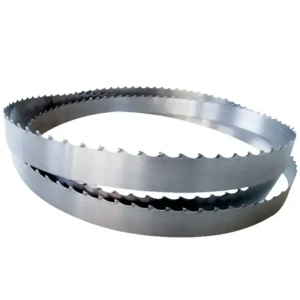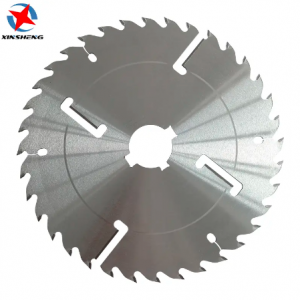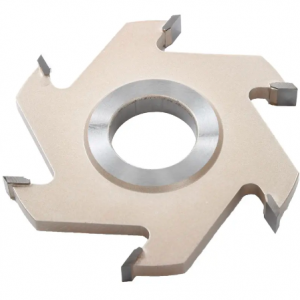As any woodworker knows, one of the most important components of a woodworking project is the tools you use. They ensure precision, durability and efficiency in woodworking projects. In this article, we'll take a deep dive into three basic woodworking tool categories: carbide saw blades, carbide band saw blades, and finger-joint knives. You'll learn about their unique features, advantages and disadvantages, and how to choose the best of them.
1. Carbide saw blade
Carbide saw blades have been used by woodworkers for years, and they are without a doubt a favorite choice for many. One of the distinguishing features of carbide saw blades is their cutting speed and precision. They are also very tough and durable, making them perfect for sawing the toughest woods.
One of the basic elements of a carbide saw blade is the number of teeth and the diameter of the saw blade. The more teeth a carbide saw blade has, the smoother, cleaner cuts it will produce. Therefore, carbide saw blades with a higher tooth count are best for cutting thinner materials. On the other hand, larger blade diameters are effective for cutting thicker materials.
Carbide saw blades come in a variety of styles including flat top, alternating top bevel, triple blade and combination types. The choice of carbide saw blade type mainly depends on the application and woodworking needs. For example, flat-topped blades are best for cutting hardwoods, while combination blades can effectively cut both hardwoods and softwoods.
2. Carbide band saw blade
Unlike carbide saw blades, carbide band saw blades are long and narrow. They have a strap that goes through the blade guide. One of their most notable advantages is that they can withstand heavy and continuous use in different woodworking projects. Carbide band saw blades can cut through almost any material, making them versatile.
Likewise, carbide bandsaw blades come in different types, including variable pitch, rake tine, hook and skip tine. Each type of carbide band saw has unique features that make it suitable for a variety of applications.
For example, variable-pitch carbide band saw blades have a constant tooth pitch, which is great for cutting curves and re-sawing. Rake toothed carbide bandsaw blades, on the other hand, have larger cogs and tines for efficient cutting through hardwoods. The hooked carbide bandsaw blade features sharp tooth angles to easily cut through softwoods, plastics and non-ferrous metals. Finally, skip-tooth carbide bandsaw blades are perfect for woodworkers looking for fast cutting speeds.
3. Finger joint knife
A finger-joint cutter is an assembly tool used by woodworkers to join two pieces of wood. It works by cutting fingers or protrusions in the end grain of one piece of wood and matching them with corresponding grooves cut in the end grain of another piece of wood. Finger joint pliers are an essential tool for carpenters who often produce cabinets, doors, furniture and other similar joinery items.
Finger joint cutters use carbide tips, making them super hard and durable. Again, these cutters are available in different types including standard, spiral, step and orbital cutters etc. The choice of finger joint cutter type depends on the woodworking application, wood thickness and user preference.
For example, standard finger-joint knives are great for general woodworking applications, while helical finger-joint knives are great for woodworking projects that require a smoother cutting motion. Step and track cutters are great for contouring doors, windows and frames, while multi-shape finger-joint cutters can cut up to three fingers at a time.
in conclusion
Carbide saw blades, carbide band saw blades and finger joint cutters are an essential part of any woodworking tool collection. These tools provide unmatched cutting efficiency, durability and precision, making woodworking projects more comfortable and smooth. Blade type, number of teeth, blade diameter, and user preference must be considered when selecting the proper blade for your project. By doing this, you'll be sure to find the perfect blades and knives for your next woodworking project.
Post time: May-31-2023



